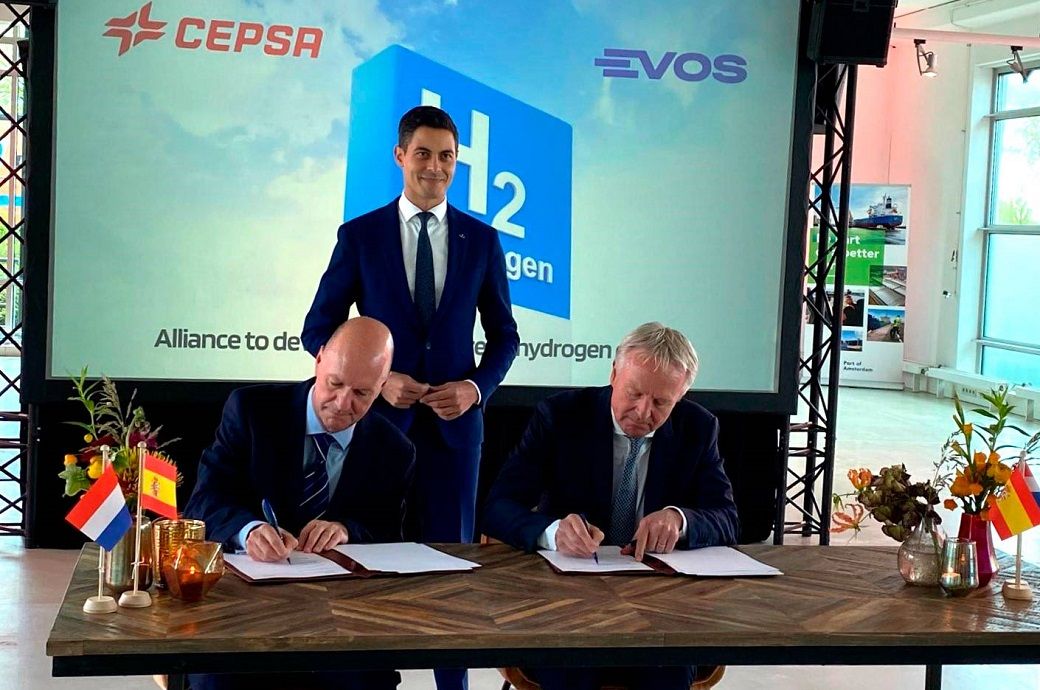The agreement was signed at the Port of Amsterdam in the presence of Dutch Minister for Climate and Energy Policy and Deputy Prime Minister Rob Jetten.
Cepsa partners with Evos for green methanol and ammonia storage in Spain and the Netherlands.
This collaboration supports Cepsa’s large-scale green hydrogen projects and reinforces Evos’ strategic presence in renewable fuels storage.
Cepsa is developing the Andalusian Green Hydrogen Valley while Evos focuses on expanding its renewable fuel infrastructure.
Cepsa CEO Maarten Wetselaar said: “Through strategic partnerships, Cepsa is building a network of green molecule supply stretching from Spain to northern Europe. This alliance with Evos provides crucial storage infrastructure which will enable the flow of green methanol produced in southern Spain into northern Europe, reinforcing the viability of our large-scale green hydrogen projects. Last year, we announced the development of one of the largest green methanol projects in Europe as part of our Andalusian Green Hydrogen Valley, and this new partnership provides us with the end-to-end solution to bring these green molecules to our customers in Northwest Europe as we support decarbonization efforts across the continent.”
Harry Deans, CEO of Evos said: “As Evos extends its reach within the Green Import Corridors of Northwest Europe and propels the growth of our Algeciras terminal in Spain, we are pleased to join forces with Cepsa to provide essential infrastructure to accelerate the energy transition. This collaboration will pave the way for a South-North corridor for green hydrogen products, aligning seamlessly with the strategy for our eight terminals, located in key strategic ports, to lead the energy transition in partnership with our clients.”
Cepsa is developing alongside partners the Andalusian Green Hydrogen Valley that which will entail two green hydrogen plants with a total capacity of 2 GW, a green methanol plant that aims to reach an estimated annual production capacity of 300,000 tons, and a green ammonia plant with an annual production capacity of up to 750,000 tons. In addition, Cepsa has started building a second-generation biofuels plant in Huelva as part of a joint venture with Bio-Oils that will create the largest facility of its kind in southern Europe with the capacity to flexibly produce 500,000 tons of Sustainable Aviation Fuel (SAF) and renewable diesel annually.
Evos is enhancing its strategic presence in the Green Import Corridors of Northwest Europe, focusing on the storage and handling of green hydrogen derivatives and renewable fuels. Meanwhile, in Spain, Evos is progressing the expansion of its Algeciras terminal as a renewable export hub. Across all Evos terminals, infrastructure for green bunker fuels, such as green Ammonia and green Methanol, is undergoing development.
Already a key part of Evos’ portfolio, the storage and handling of SAF will see further expansion in the coming years. Collaborating with partners, Evos aims to pioneer an integrated terminal concept, with nearby green fuels production facilities, to enhance carbon reductions and to augment the Energy Transition.
Green methanol is made by using green hydrogen and non-fossil sources of carbon captured from the atmosphere or from agricultural and forestry waste and can replace fossil methanol, reducing carbon emissions in hard-to-abate industries such as long-distance shipping and other industries such as chemicals and plastics.
By 2050 the demand for methanol could triple to some 300 million tons per annum, with the majority being for green methanol.
Cepsa already has a partnership with the Port of Rotterdam to establish a green hydrogen corridor from the Port of Algeciras and also has agreements with ACE Terminal for the storage of green ammonia at the Port of Rotterdam and with Dutch company Gasunie that guarantees access to its green hydrogen transport network, which will connect with European industrial clusters in the Netherlands, Germany and Belgium as part of the Delta Corridor project.
Note: The content of this press release has not been edited by Fibre2Fashion staff.
Fibre2Fashion News Desk (HU)







